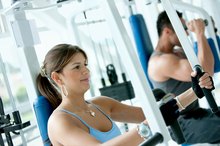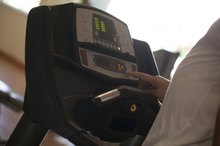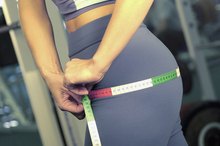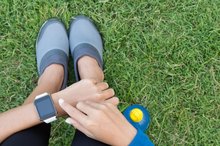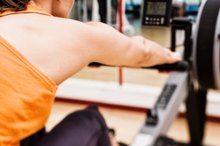What does fact checked mean?
At Healthfully, we strive to deliver objective content that is accurate and up-to-date. Our team periodically reviews articles in order to ensure content quality. The sources cited below consist of evidence from peer-reviewed journals, prominent medical organizations, academic associations, and government data.
- Cleveland Clinic: Pulse and Target Heart Rate
- American College of Sports Medicine: ACSM Position Stand on Physical Activity and Weight Loss Now Available
- American College of Sports Medicine: ACSM Position Stand on Physical Activity and Weight Loss Now Available
The information contained on this site is for informational purposes only, and should not be used as a substitute for the advice of a professional health care provider. Please check with the appropriate physician regarding health questions and concerns. Although we strive to deliver accurate and up-to-date information, no guarantee to that effect is made.
Heart Rate By Age & Stationary Bikes to Lose Weight
Feel supported, comfortable and challenged from your stationary bike workouts. An indoor cycling workout elevates your heart rate to burn calories which leads to weight loss. Your weight-loss goals are reached when you exercise within a certain heart rate range for a minimum length of time. Your age-predicted pulse gives you an indication of your cycling intensity so you can quickly adjust your workout to match your goals.
We're Off to See the Wizard
Unlike the Tin Man, you have a heart. Your heart rate increases with exercise, and you should cycle at a rate that is between 60 and 80 percent of your maximum heart rate. Your age-predicted MHR is calculated by subtracting your age from 220. You determine your training heart rate range by multiplying your MHR by 0.60 and 0.80. During exercise, locate your pulse on the side of your neck or the thumb underside of your wrist. Count the beats you feel within 10 seconds and multiply the result by 6. Check to see if you are within your target heart rate.
- Unlike the Tin Man, you have a heart.
- You determine your training heart rate range by multiplying your MHR by 0.60 and 0.80.
Sitting Tall
How to Change the Settings on a Resmed CPAP Machine
Learn More
Two of your choices for stationary cycling include upright and group cycling bikes. Group cycling bikes are mostly used in a class and have a fast-spinning flywheel for an intense workout. Both of these have the pedals underneath you for a ride similar to one outdoors. You use the muscles of your lower body, including your glutes, hip flexors, quadriceps, hamstrings, calves and the muscles along your shins to pedal through your workout. As you pedal within your target heart rate, you burn calories toward weight loss. Aim to cycle near the top end of your pulse to burn a higher number of calories.
- Two of your choices for stationary cycling include upright and group cycling bikes.
Feel the Difference
You have another option for your indoor cycling. A recumbent bike has a wider seat with a back support. The pedals are in front of you so your legs are horizontal instead of vertical. Your heart rate on a recumbent bike is less than on an upright bike. One reason for this is the back support provided by the seat. Your muscles do not have to work as hard to keep your torso upright, which reduces the load on your heart. The other reason is that the horizontal position of your legs makes it easier for the heart to pump blood to your working muscles, instead of pumping the blood vertically against gravity.
- You have another option for your indoor cycling.
- The pedals are in front of you so your legs are horizontal instead of vertical.
Doing Time
Machine Exercises for the Sciatic Nerve
Learn More
Your heart rate and type of bike will affect the number of calories you burn toward your weight-loss goals. Another factor is the duration of your workout. The American College of Sports Medicine recommends 150 to 250 minutes each week of exercises such as cycling to lose weight 4. If you exercise five days a week, each workout should be at least 30 to 45 minutes. For greater weight-loss gains, the ACSM recommends more than 250 minutes each week.
- Your heart rate and type of bike will affect the number of calories you burn toward your weight-loss goals.
- The American College of Sports Medicine recommends 150 to 250 minutes each week of exercises such as cycling to lose weight 4.
Related Articles
References
- Cleveland Clinic: Pulse and Target Heart Rate
- Bicycling Magazine's Training Techniques for Cyclists; Ben Hewitt
- NSCA's Essentials of Personal Training; National Strength and Conditioning Association
- American College of Sports Medicine: ACSM Position Stand on Physical Activity and Weight Loss Now Available
- Muyor JM. Exercise Intensity and Validity of the Ratings of Perceived Exertion (Borg and OMNI Scales) in an Indoor Cycling Session. J Hum Kinet. 2013;39:93-101. doi:10.2478/hukin-2013-0072
- Chavarrias M, Carlos-Vivas J, Collado-Mateo D, Pérez-Gómez J. Health Benefits of Indoor Cycling: A Systematic Review. Medicina (Kaunas). 2019;55(8). doi:10.3390/medicina55080452
- Lambourne K, Tomporowski P. The effect of exercise-induced arousal on cognitive task performance: a meta-regression analysis. Brain Res. 2010;1341:12-24. doi:10.1016/j.brainres.2010.03.091
- Bianco A, Bellafiore M, Battaglia G, et al. The effects of indoor cycling training in sedentary overweight women. J Sports Med Phys Fitness. 2010;50(2):159-65.
- Szabo A, Gáspár Z, Kiss N, Radványi A. Effect of spinning workouts on affect. J Ment Health. 2015;24(3):145-9. doi:10.3109/09638237.2015.1019053
Writer Bio
A mother of two and passionate fitness presenter, Lisa M. Wolfe had her first fitness article published in 2001. She is the author of six fitness books and holds an Associate of Arts in exercise science from Oakland Community College. When not writing, Wolfe is hula-hooping, kayaking, walking or cycling.

